Bright white floors, large windows and thousands of carefully placed mosaic panels greet visitors walking into Kyiv’s Central Bus Station on 1 Nauky Avenue.
Twenty-six columns support the station, covered with small green pieces depicting buses, cars and the outdoors. Two large murals on the third floor illustrate Moscow and Kyiv, both major centers of the Soviet Union, where the artwork was made 60 years ago.
When the station was bought by a private investor last year, the art was at risk of being destroyed. But Kyiv residents banded together, managing to protect and revitalize the station, proving that modernization and preservation are compatible.
With the consent of the new owner, the inner station was thoroughly renovated. On June 15, the second and third floors were completed and the station was reopened.
Fading away
The interior of the Central Bus Station was designed by artists Ada Rybachuk and Volodymyr Melnychenko in 1961, when the station’s construction was completed.
Organizations in charge of Kyiv’s bus stations have changed throughout the years. Most recently, authority was granted to the state enterprise Kyivpasservice in 2005.
The bus station also changed. The beautiful mosaics faded over time, gathering dirt and grime over the past six decades.
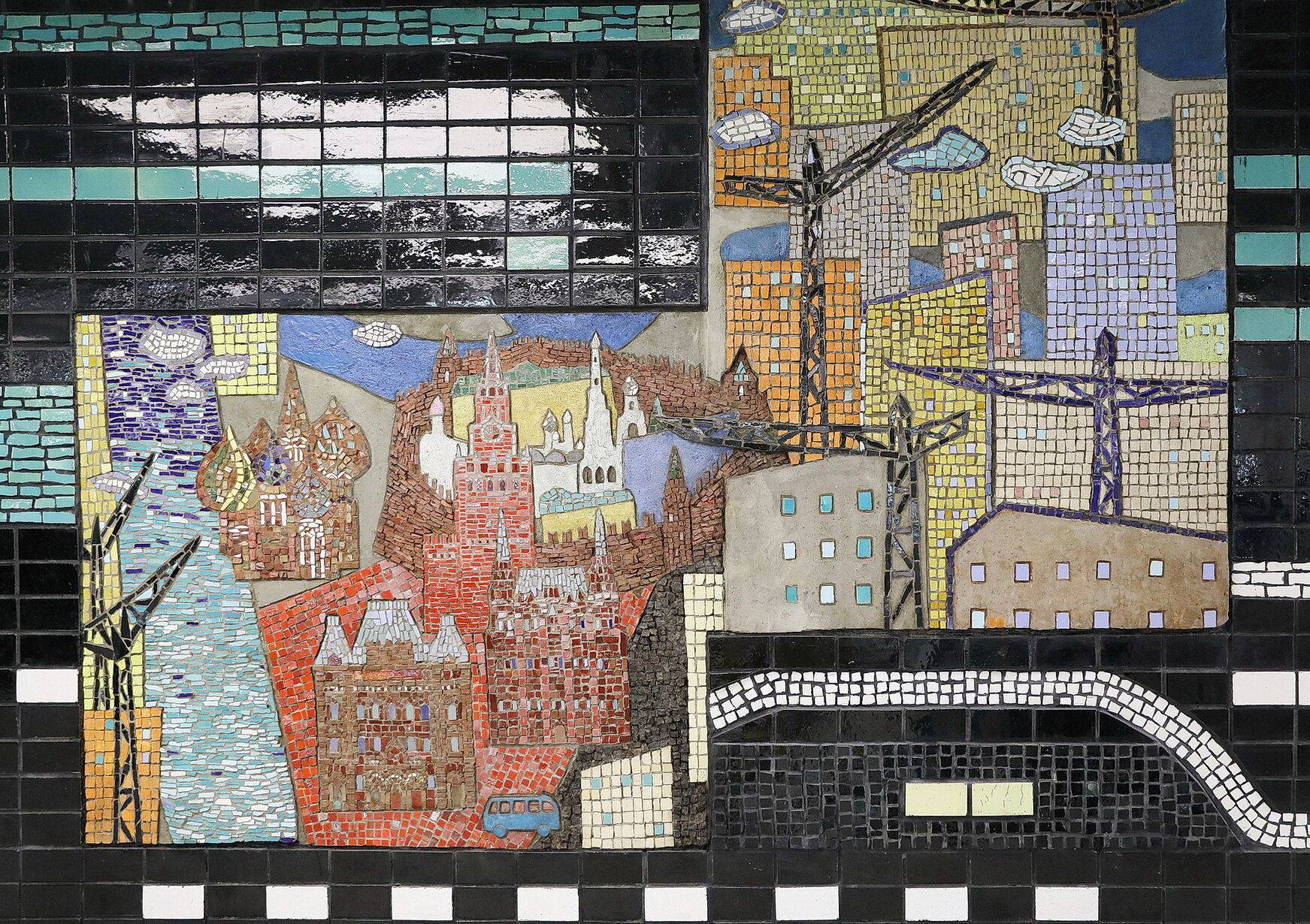
One of the larger murals depicting Moscow on the third floor the Kyiv Central Bus Station at 1 Nauky Ave finally restored and revealed on June 15. (Oleg Petrasiuk)
Some improvements have been built, including an underground tunnel and the Demiivska metro stration, which provide easier access than the older Lybidska station.
“Even so, approaching the bus station, you realize how much it needs modernization,” Dmytro Ozhigov, marketing director of Kyivpasservice said in a press release. “Disordered advertising, chaotic layout of kiosks, the McDonald’s looking like it was from the 90’s.”
Modernization
The State Property Fund put several bus stations up for auction. In 2020, the investment company Bastion Group LLC purchased the controlling stake of the Central Bus Station for Hr 230.9 million ($8.4 million).
Bastion Group LLC is owned by businessman Vladimir Ivchun. To buy bus stations in the capital, he had to agree to keep them active for at least five years and in the Kyiv region for at least 15.
The project to redevelop the Central Bus Station was given to MCube, a design and architecture company led by Ivan Margitych. The plan is to create additional services including a food court, recreation areas, a medical office and a hotel where guests can stay overnight.
When the Ada Rybachuk and Volodymyr Melnychenko Cultural Heritage Preservation Fund (ARVM) found out about the purchase, it grew worried about the future of the artists’ work.
“We made a case about the value of preserving it,” Ivan Margitych told the Kyiv Post, “and they were open to the idea.”
After speaking with the fund and Melnychenko himself, the Bastion Group granted permission to restore the art in the station as long as the fund raised the money to do so.“
“We gathered money constantly,” Yulia Ralyuk of the fund told the Kyiv Post, “Lots of donations, lots of sponsors, but most of it was people giving out 200 or 300 hryvnias at a time.”
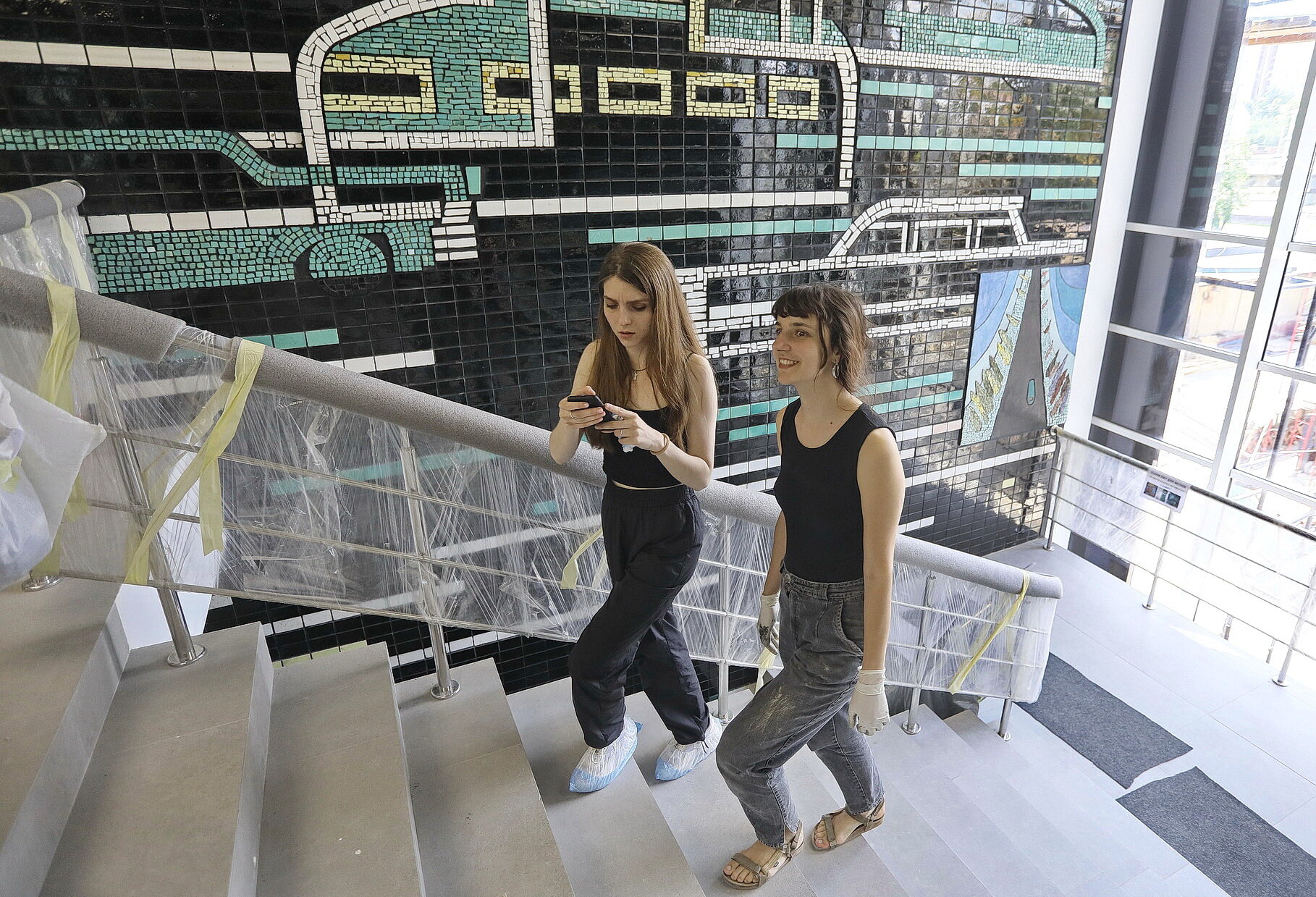
Yulia Ralyuk and Anastasia Lenyuk walk to the third floor to look at the mosaics at the Kyiv Central Bus Station at 1 Nauky Ave on June 15. (Oleg Petrasiuk)
This is the preservation fund’s biggest successful project, achieved with the help of the restoration company The Gurin Brothers, cleaning initiative InWhite Solutions and hundreds of volunteers.
Working together
The restoration started in December 2020. The Gurin Brothers worked on the mosaics and murals. “After all these years it was very dirty,” Anton Gurin told the Kyiv Post. “We needed to restore it to its original appearance; with the consultations of the original artist and photos, we restored it.”
The company deployed more than 150 volunteers, who spent months coming in on their own time, carefully placing mosaics onto columns and walls.
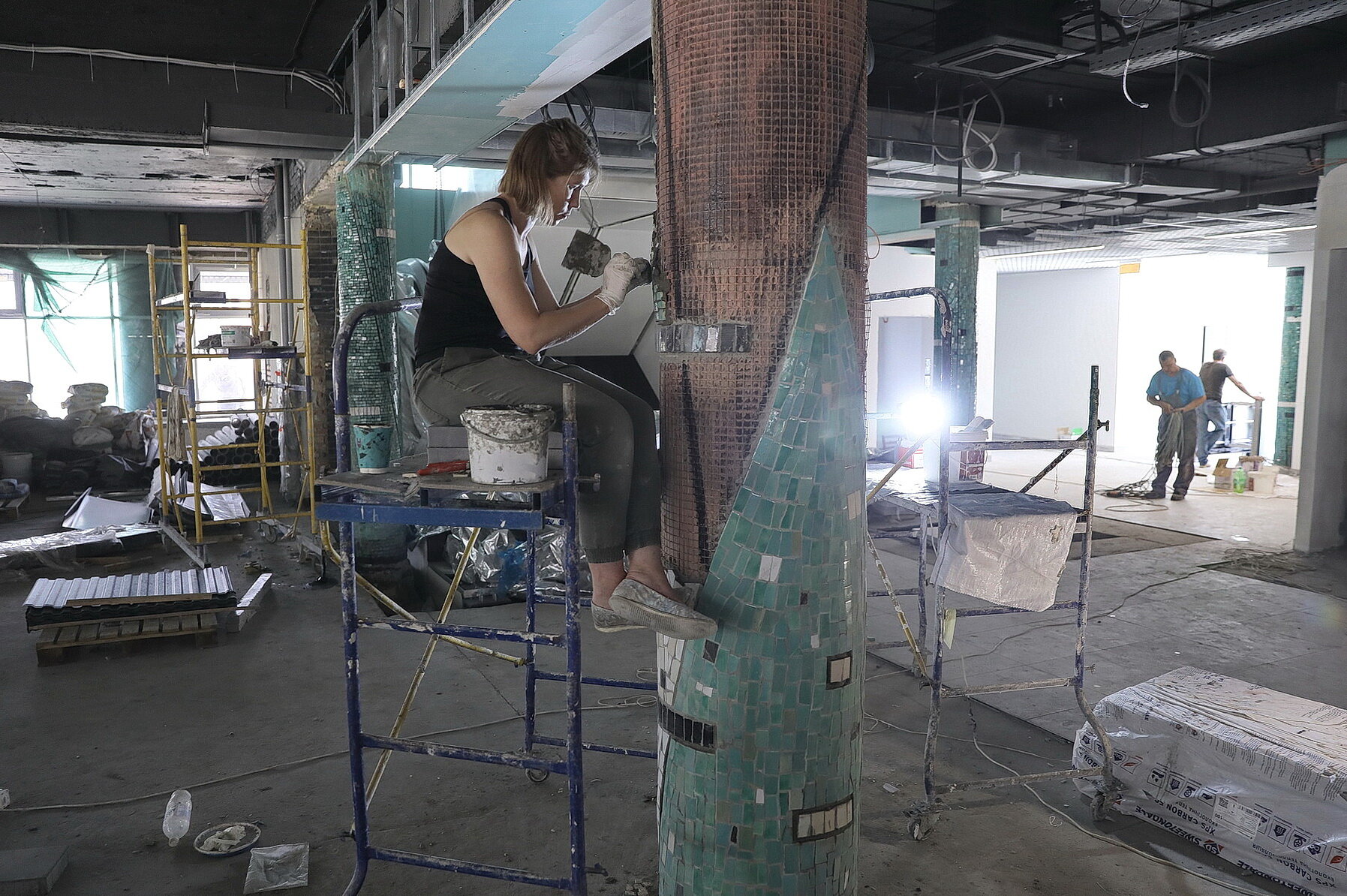
Hundreds of volunteers came to work on carefully restoring the mosaics at the Kyiv Central Bus Station at 1 Nauky Ave during their own free time throughout the past few months. The first floor columns were the last to be completed. Taken on June 15. (Oleg Petrasiuk)
Even a former schoolteacher of some of the volunteers, who lived across the street from the bus station, prepared food for the people working on the restoration. “She’s always asking how many people there are that day, and always ready to bring it to us. She says ‘I can’t physically help you out, but I will do what I can,’” Anastasia Lenyuk, one of the volunteers, told the Kyiv Post.
Twenty-six columns were restored, with six of them having to be completely rebuilt. Each mosaic was carefully placed, and cleaned.
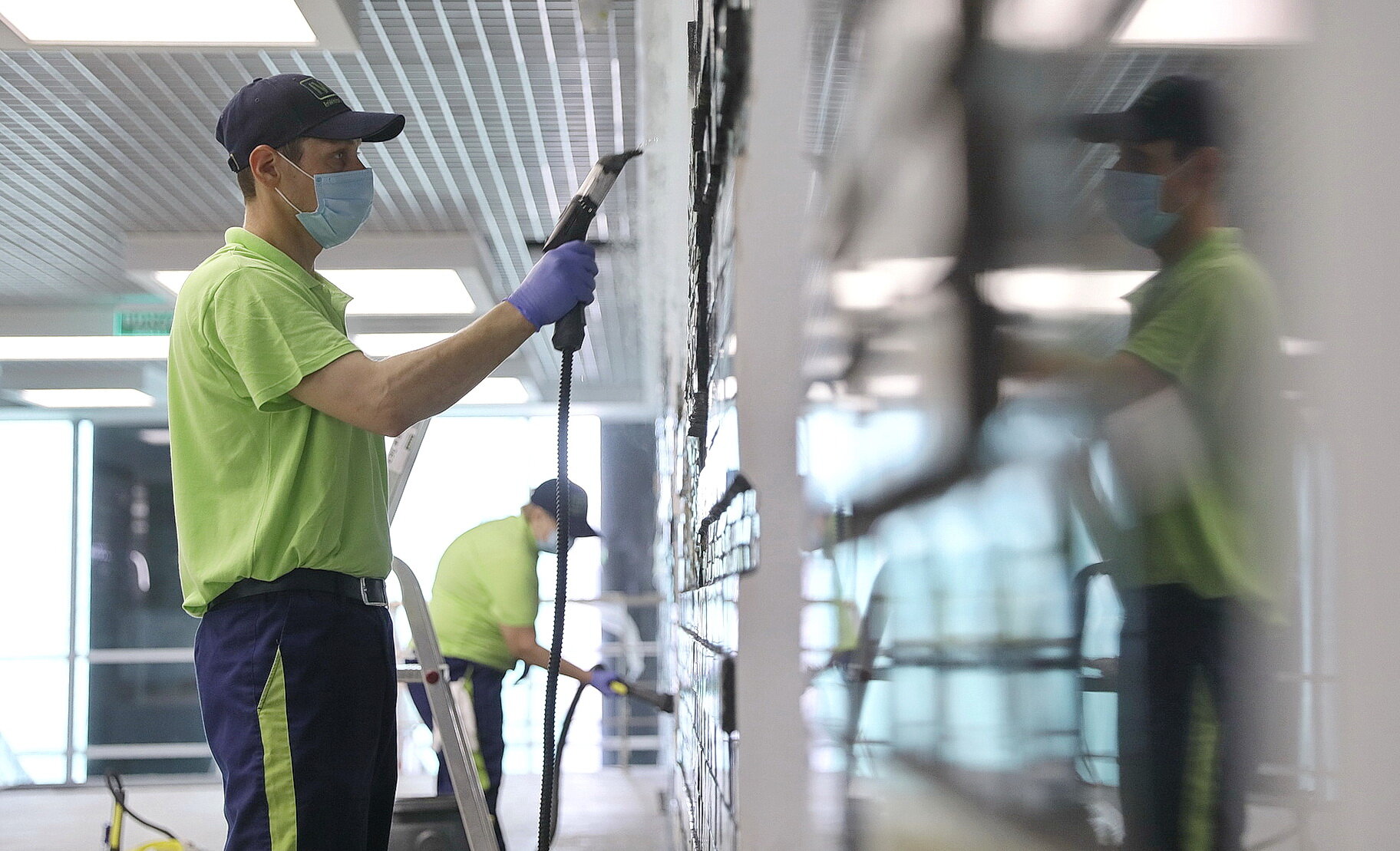
An InWhite employee cleans the mosaics at the Kyiv Central Bus Station at 1 Nauky Ave on June 15. These murals and patterns were originally designed by Soviet artists Ada Rybachuk and Volodymyr Melnychenko in the 1960s and have recently been cleaned and restored to their former glory by restoration experts and hundreds of volunteers. (Oleg Petrasiuk)
InWhite previously washed numerous monuments around Kyiv, including the Stela Monument, the statues of Mykhailo Hruschevsky and Taras Shevchenko and the entrance to Kyiv’s Independence Square.
But restoring the Central Bus Station was almost like working with jewels according to InWhite’s director, Tatiana Dovydovych.
“Every mosaic, it’s important to clean and stick individually,” Dovydovych says.
Washing each mosaic with steam at 36–38 degrees Celsius, InWhite used the softest rags and neutral chemicals in spots only where it was sorely needed.
Visitors can see that the mosaics were treated with the utmost care. When walking into the bus station the green murals and mosaics shine like small emeralds.
“It’s interesting because it’s a completely new interior that is integrated with old mosaics,” Gurin says, “It looks more modern. So you can come and see that you don’t have to destroy but preserve.”
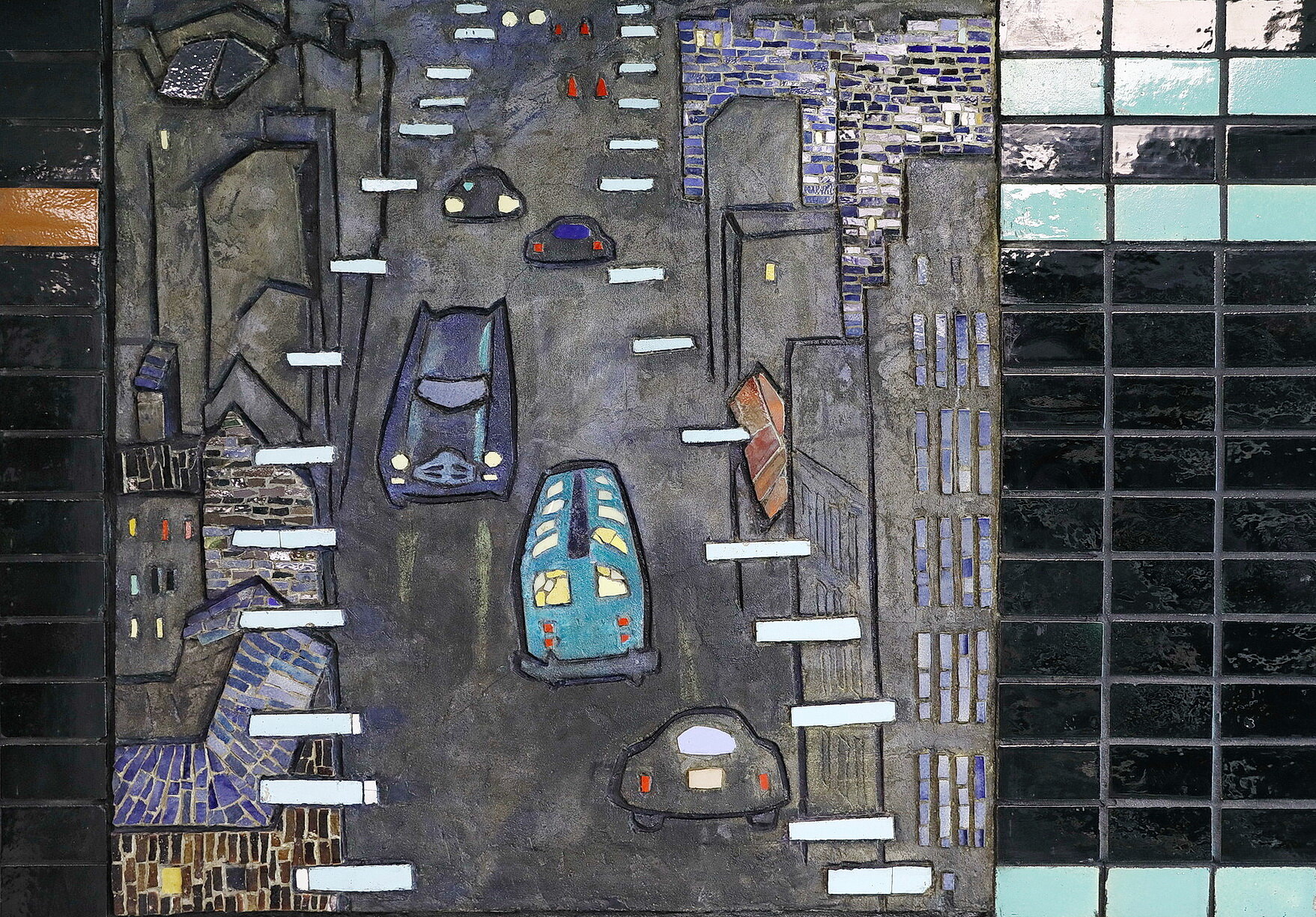
The mosaics at the Kyiv Central Bus Station at 1 Nauky Ave were integrated into the columns and walls of the newly renovated building. They show buses, cars, and city life, they were finished and revealed on June 15. (Oleg Petrasiuk)
Future precedent
Volodymyr Melnychenko Cultural Heritage Preservation Fund not only protected Rybachuk and Melnychenko’s art, but revitalized it, proving that other Soviet buildings can be modernized while maintaining their art and history.
“These kinds of projects are only just starting to happen,” Gurin said. “I think that we will do it more and more.”
The fund doesn’t plan to stop here. The group just recently opened a museum workshop alongside Melnychenko at his personal studio. “We gather people, volunteers, we tell them stories and they can actually speak to the artist,” Ralyuk said.
Visitors can register for tours at the museum workshop on the ARVM’s Facebook page.
